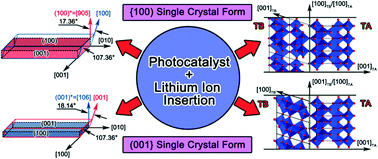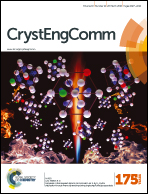Single crystal forms induced diverse interface structures in TiO2 (B)/anatase dual-phase nanocomposites†
Abstract
The growth morphologies of the two types of single crystal forms in TiO2 (B) and the induced multiple interface structures in TiO2 (B)/anatase nanofibers were investigated by means of scanning and transmission electron microscopy. It is suggested that both single crystal forms have the same lath-shaped morphology with the only differences of size and thickness. By calculating 4 parameters which may affect the growth of selected facets from the perspective of crystallography, the competition mechanism between the two single crystal forms has been interpreted successfully. Moreover, different interface structures induced by different single crystal forms of TiO2 (B) were also confirmed during phase transformation from TiO2 (B) to anatase. Through the analysis of these interface structures, it is believed that the (001)TB//(100)TA interface contains larger nanotunnels than the (100)TB//(100)TA interface. These nanotunnels are considered to be more suitable for intercalation and deintercalation of lithium ions in the application of Li+ batteries. Moreover, the existence of these coherent interfaces is favorable for carrier transfer during photocatalytic processes. The results of this work provide a potential idea to prepare multi-purpose TiO2 nanocrystals.


 Please wait while we load your content...
Please wait while we load your content...